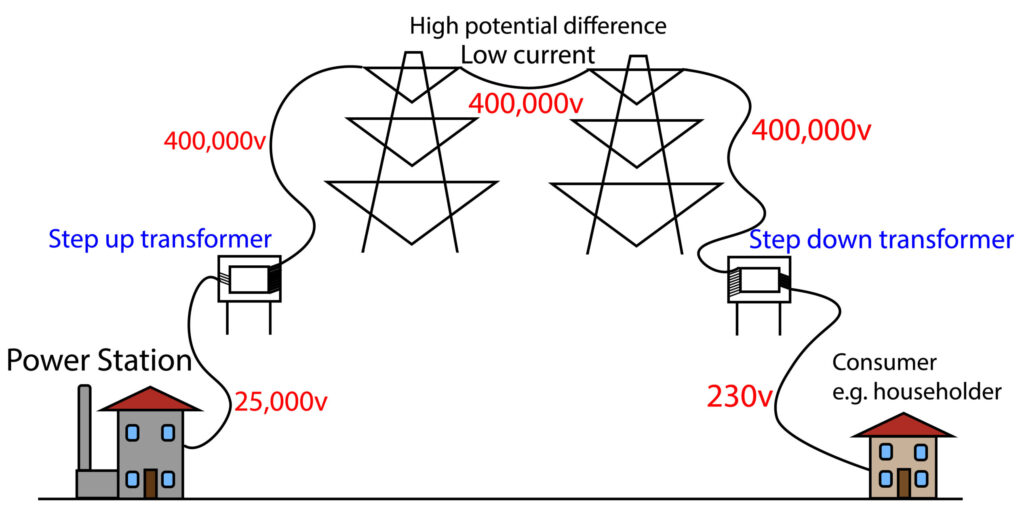GCSE National Grid
National Grid
The National Grid is a network of transformers and cables that will distribute electricity from power stations to consumers such as homeowners, factories and offices.

The power station produces an alternating potential difference of 25kv, or 25000v. Electricity from the power station will then be passed to a step up transformer
At the step up transformer the potential difference of the electricity is increased from 25,000v to 400,000v.
This allows the electricity to be transmitted as a high potential difference, low current.
Before the electricity reaches consumers such as homes it will pass through a step down transformer where the potential difference is reduced down to 230v for homes.
Why do we transmit the electricity with a high potential difference?
Electricity transmission is more efficient if a large potential difference is used, because it means a smaller current will flow.
Remember the equation Power = potential difference x current?
A large potential difference means that a small current is needed to transfer the same amount of electrical power.
If we now use another equation, for heat loss which links power, current and resistance:
Power = current2 x resistance
The smaller the current, the smaller the power loss due to resistance heating in the electrical cables.
Overall, using high potential difference, low current allows the transmission of electricity to be efficient.
Practice Questions
1. Define the term national grid
2. Why is the electricity transmitted as a high potential difference, low current?
3. State the role of transformers in the transmission of electricity.
Absorption and Emission of EM Radiation
JJ Thomson and Plum pudding model
Ernest Rutherford and the Nuclear Model
Niels Bohr changing the Nuclear Model
Discovering the Proton and Neutron
Measuring radiation from radioactivity
Radiation types and properties
Random nature of radioactive decay
Radioactive contamination or irradiation
Hazards of contamination and irradiation
Studies on the effects of radiation on humans
Different half lives of radioactive isotopes
Nuclear Fission Chain Reaction
Writing nuclear fission equations